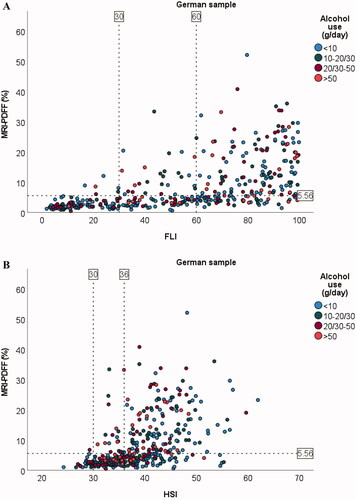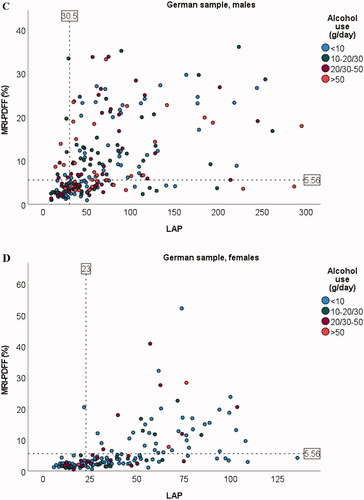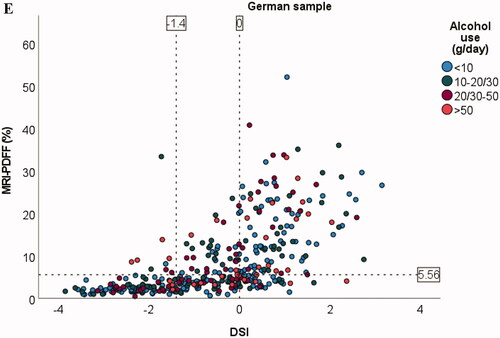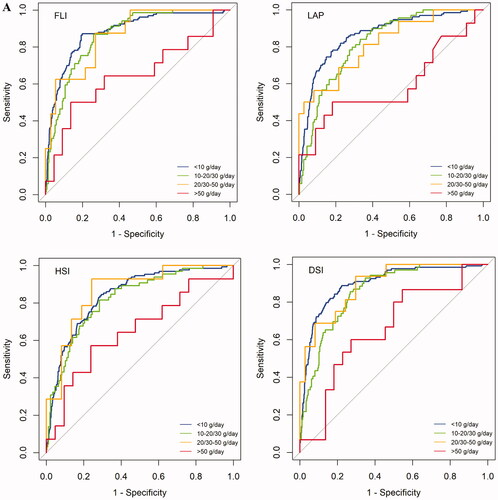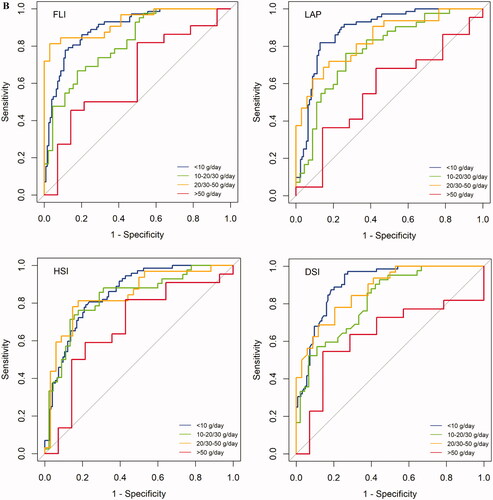Figures & data
Table 1. Characteristics of the study populations.
Figure 2. Boxplots of differences in index distribution between no FLD or FLD shown for different alcohol consumption groups; Finnish sample (A), German sample (B). Boxes represent the middle two quartiles, the horizontal line inside box represents median. Upper and lower quartiles are expressed as vertical lines within the range. Outliers are marked by dots. Alcohol consumption cut-offs (g/day) for males were <10, 10–30, 30–50, and >50. Corresponding cut-offs for females were <10, 10–20, 20–50, and >50.
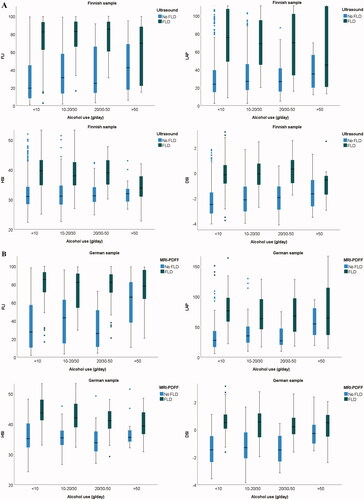
Table 2. AUROCs and 95% CIs for FLD indices to detect FLD according to alcohol consumption.
Table 3. Performance measures for FLD indices.

